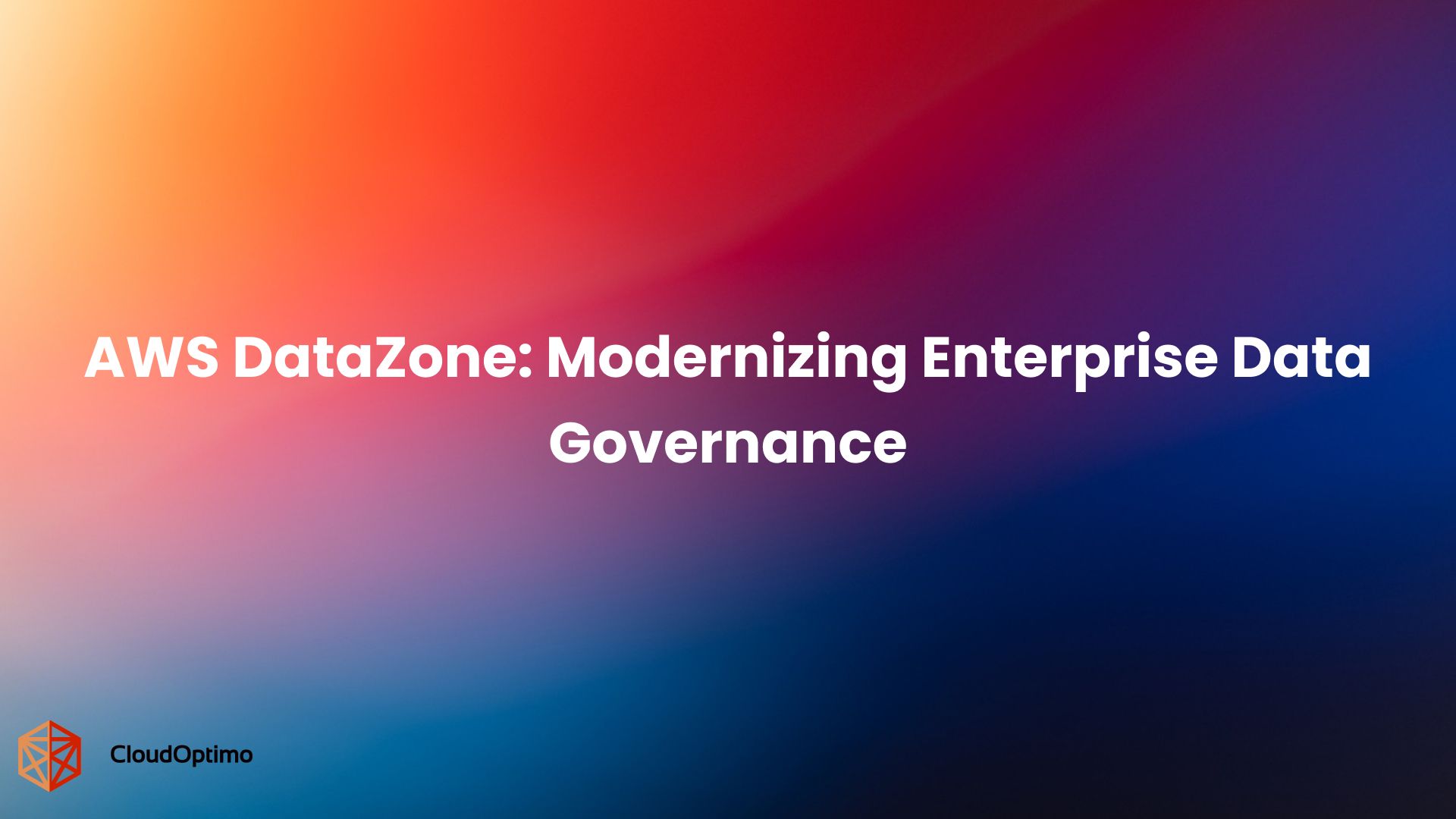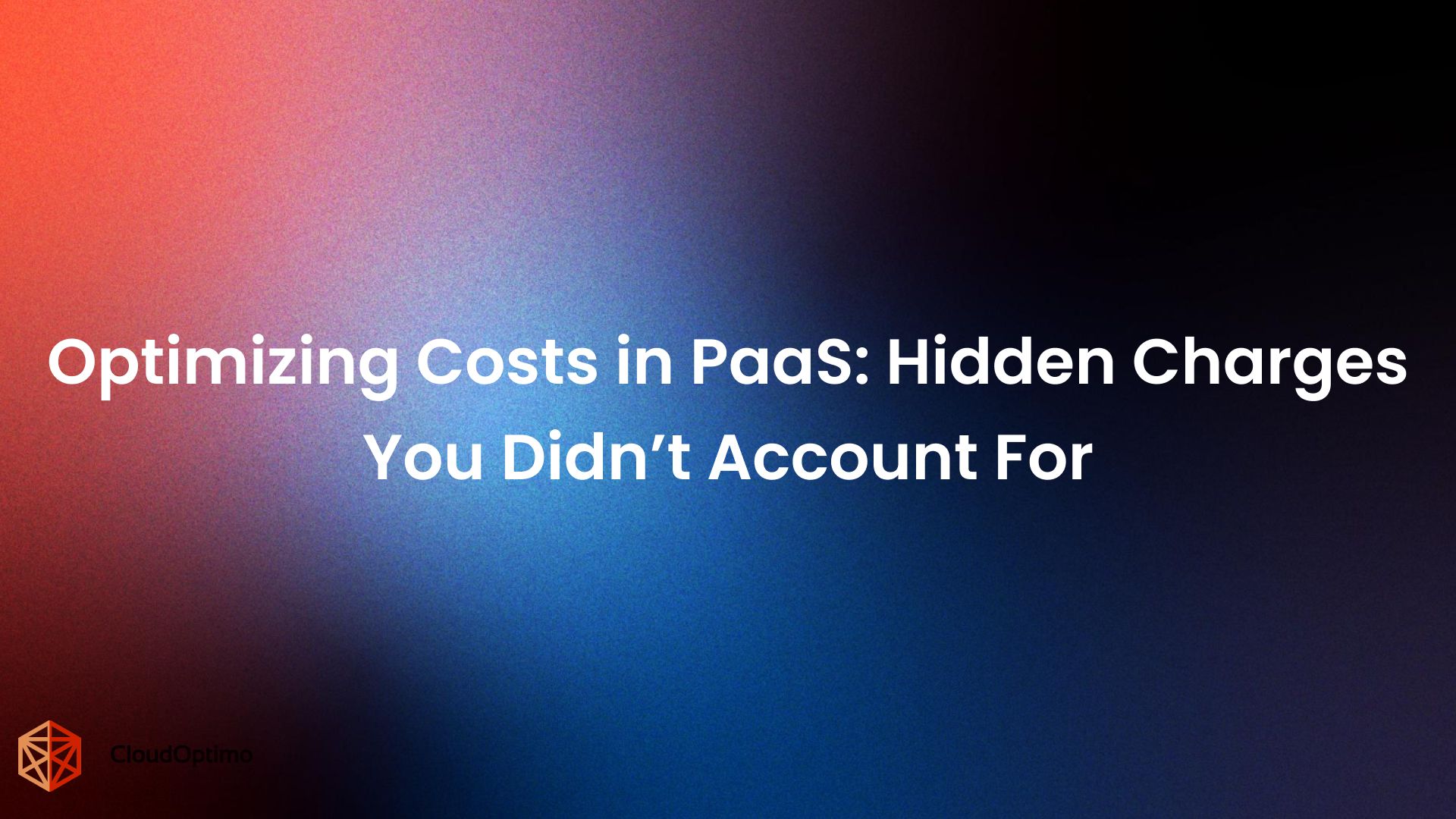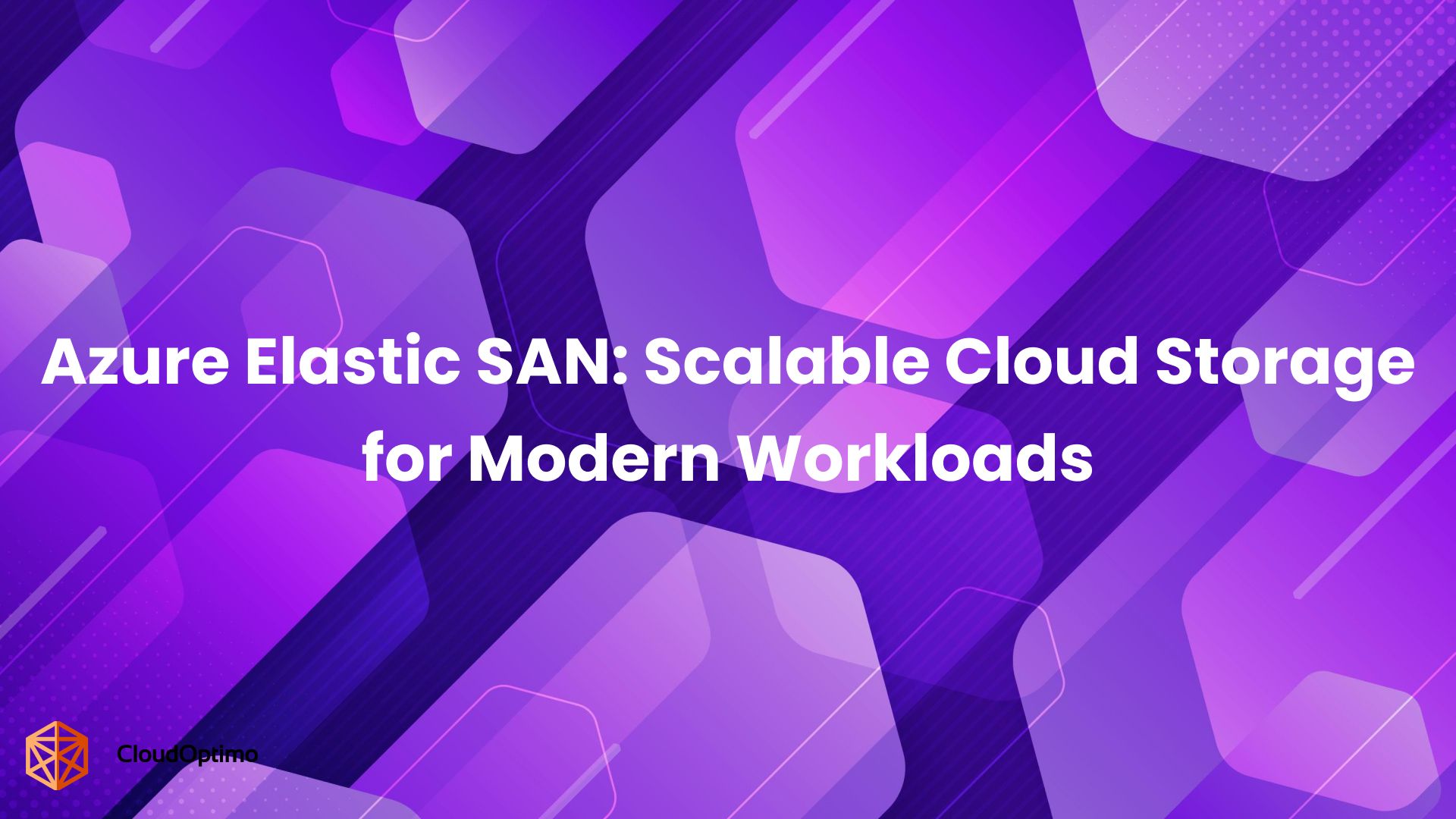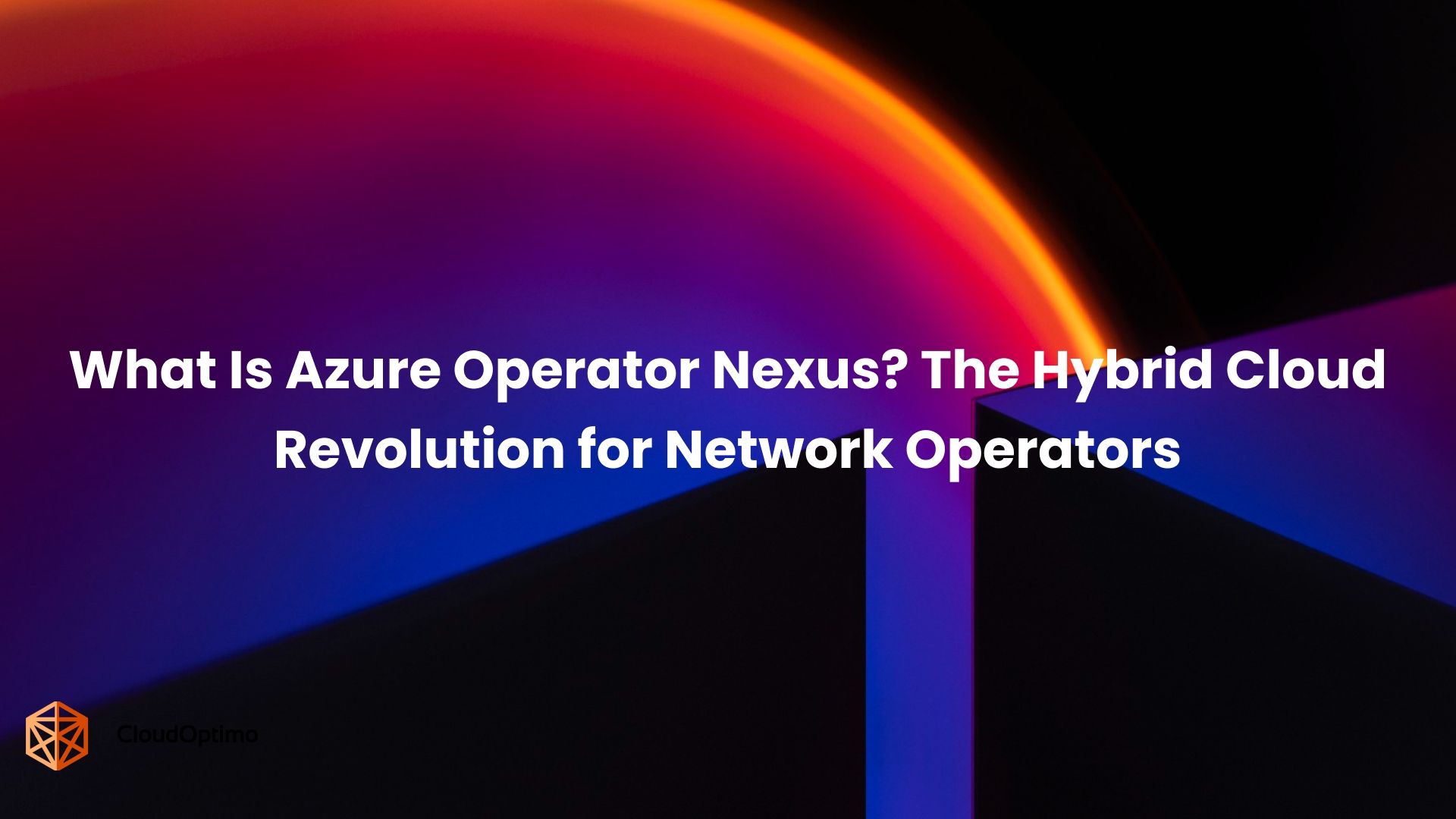To understand why AWS EDP (Enterprise Discount Program) could be a game-changer for your organization, let's first review AWS's core pricing models:
- On-Demand: Pay-as-you-go pricing, ideal for unpredictable workloads.
- Reserved Instances: Significant savings through upfront commitments for long-term needs.
- Savings Plans: A flexible option combining the benefits of On-Demand and Reserved Instances.
While these models offer cost-saving opportunities, the AWS Enterprise Discount Program (EDP) takes optimization to a new level for large-scale cloud consumers. Often overlooked, EDP has the potential to revolutionize cloud cost management for organizations with substantial AWS usage. If you're seeking to transform your approach to cloud spending and unlock significant savings, EDP might be the solution you need. Let's explore how this program can redefine your cloud economics.
What is AWS EDP?
AWS EDP (Enterprise Discount Program) is a customized pricing model designed for enterprises with substantial cloud usage or those planning significant growth in their AWS footprint. It's AWS's answer to the age-old business principle: buy more, save more. However, the EDP goes beyond simple volume discounts, offering a subtle approach that aligns with the complex needs of large organizations.
EDP Pricing Structure
While exact EDP pricing is customized and confidential, we can provide some illustrative examples to give a sense of the potential savings. EDP discounts are typically tiered based on commitment levels and can range from 5% to over 30% for substantial commitments.
Here's a hypothetical tiered discount structure:
| Annual Commitment | Discount Percentage |
| $1M - $5M | 5% - 10% |
| $5M - $10M | 10% - 15% |
| $10M - $20M | 15% - 20% |
| $20M - $50M | 20% - 25% |
| $50M+ | 25%+ (negotiable) |
It's important to note that these discounts are applied on top of other savings mechanisms like Reserved Instances or Savings Plans.
How Does EDP Work?
Unlike standard AWS pricing, EDP offers a tiered discount structure. The deeper your commitment and higher your consumption, the greater the discount. These discounts are typically applied to your overall AWS bill, providing a holistic approach to cost reduction. The negotiation process for EDP is strategic and requires a deep understanding of your organization's cloud consumption patterns.
To illustrate, let's consider a hypothetical scenario:
Company XYZ, a large e-commerce platform, has the following annual AWS spend:
| Service | Annual Spend |
| EC2 | $2,500,000 |
| RDS | $1,000,000 |
| S3 | $800,000 |
| CloudFront | $400,000 |
| Other | $300,000 |
| Total | $5,000,000 |
By entering into an EDP agreement with a 3-year commitment of $15 million, they secure a 20% discount on their overall AWS usage. Here's how the savings might break down:
| Year | Without EDP | With EDP | Savings |
| 1 | $5,000,000 | $4,000,000 | $1,000,000 |
| 2 | $5,250,000 | $4,200,000 | $1,050,000 |
| 3 | $5,512,500 | $4,410,000 | $1,102,500 |
| Total | $15,762,500 | $12,610,000 | $3,152,500 |
This example assumes a 5% year-over-year growth in AWS usage.
The total savings over three years amount to $3,152,500, or about 20% of the total spend.
Key Components of the AWS EDP
Committed Use Discounts
The cornerstone of the EDP is the concept of committed use discounts. Enterprises agree to a certain level of AWS usage over a fixed term, typically one to three years. In return, AWS provides substantial discounts on their services. This commitment can be monetary (e.g., $1 million per year) or based on a specific level of resource utilization.
Flexibility Across Services
Unlike some cloud providers' discount programs that lock you into specific services, the AWS EDP allows for flexibility. Your commitment can be spread across a wide range of AWS services, enabling you to adapt your cloud strategy as your needs evolve without losing the benefits of your discount agreement.
Enterprise-wide Application
The EDP isn't limited to a single department or project. Once established, the discounts apply across your entire organization, allowing for centralized cost management and optimization.
Custom Pricing
While AWS doesn't publicly disclose specific discount percentages, the EDP often involves custom pricing tailored to each enterprise's unique usage patterns and commitments.
Reserved Instance (RI) and Savings Plans Integration
The EDP can be used with other AWS cost-saving mechanisms like Reserved Instances and Savings Plans, potentially amplifying your overall savings.
Benefits of EDP
- Significant Cost Reduction: The primary allure of EDP is the potential for substantial savings. By committing to long-term usage, organizations can unlock discounts that can dramatically impact their bottom line.
- Predictability: EDP offers a degree of cost predictability. Financial planning becomes more streamlined with a fixed discount rate for a specified term.
- Strategic Partnership: EDP fosters a stronger relationship with AWS. By demonstrating long-term commitment, organizations can often secure additional benefits and support.
- Flexibility: While EDP requires a commitment, it doesn’t restrict service usage. You can continue to innovate and experiment with various AWS services.
Navigating the EDP Landscape
Eligibility and Negotiation
The EDP is typically geared towards enterprises with annual AWS spend in the hundreds of thousands or millions of dollars. The exact threshold can vary, and AWS evaluates each case individually.
Negotiation is critical and often benefits from expert assistance. Key strategies include:
- Thoroughly analyze your current and projected AWS usage across all services.
- Identify areas of potential growth or service adoption.
- Prepare multiple usage scenarios to negotiate flexible terms.
- Consider engaging cloud cost management experts or consultants to assist in negotiations.
For example, a financial services company successfully negotiated an EDP by demonstrating their plans to migrate 80% of their on-premises workloads to AWS over three years, coupled with projected growth in their machine learning initiatives using AWS SageMaker.
Commitment Structures
The commitment structure in an EDP can take various forms:
- Dollar-Based Commitments: Agree to spend a fixed dollar amount over the contract period (e.g., $5 million annually).
- Usage-Based Commitments: Instead of a dollar amount, you commit to a specific level of resource usage (e.g., 10,000 EC2 instance hours per month).
- Tiered Commitments: Some EDPs include tiered structures where reaching higher usage levels unlocks additional discounts. Discount increases as usage exceeds predefined thresholds (e.g., 10% discount for up to $5 million spend, 15% for $5-10 million, etc.).
Understanding which commitment structure aligns best with your organization's cloud strategy is crucial. It requires a deep analysis of your current usage patterns and future growth projections.
Service Coverage and Flexibility
One of the EDP's strongest selling points is its broad service coverage. Unlike more rigid discount programs that might focus solely on compute or storage, the EDP can potentially cover all AWS services. This flexibility is particularly valuable for enterprises with diverse cloud needs or those anticipating shifts in their technology stack.
The EDP can potentially cover all AWS services, but discounts may vary. For instance:
- EC2 and RDS might see discounts of 20-30%
- S3 and data transfer could have discounts in the 15-25% range
- Newer services like AWS Lambda might have smaller discounts, around 10-15%
These figures are illustrative and can vary significantly based on individual agreements.
Here's an illustrative example of how discounts might be applied across different services:
| Service Category | Standard Price | EDP Discount | EDP Price |
| EC2 (per hour) | $0.10 | 25% | $0.07 |
| RDS (per hour) | $0.20 | 20% | $0.16 |
| S3 (per GB/month) | $0.02 | 15% | $0.02 |
| Data Transfer Out (per GB) | $0.09 | 10% | $0.08 |
| Lambda (per million executions) | $0.20 | 5% | $0.19 |
Remember, these figures are illustrative and can vary significantly based on individual agreements and commitment levels.
Is EDP Right for Your Organization?
EDP is not a universal solution. It's designed for organizations with substantial and consistent AWS usage. If your monthly AWS bill exceeds a certain threshold (which varies by region), and you have a clear growth trajectory on the platform, EDP could be a viable option.
To determine EDP's suitability, conduct a thorough analysis of your AWS spending patterns, identify cost optimization opportunities, and evaluate your organization’s long-term cloud strategy.
| Criteria | EDP Readiness Indicator |
| Annual AWS Spend | $1M+ |
| Projected Growth | 20%+ year-over-year |
| Workload Stability | 70%+ stable, predictable workloads |
| Multi-Year Outlook | Clear 3-5-year cloud strategy |
| Service Utilization | Using 5+ major AWS services |
If your organization meets most of these criteria, you may be a good candidate for EDP.
Integration with Other Cost-Saving Mechanisms
The EDP doesn't exist in isolation within the AWS ecosystem. It can be used in conjunction with other cost optimization tools and programs:
- Reserved Instances (RIs): For predictable workloads, RIs can offer significant savings. The EDP can potentially stack on top of RI discounts, though the specifics can vary.
- Savings Plans: These flexible pricing models can complement the EDP, especially for organizations with varying workloads.
- AWS Cost Explorer and AWS Budgets: These tools become even more crucial when managing an EDP, helping to track usage against commitments and identify optimization opportunities.
Understanding how to leverage these tools in conjunction with your EDP can lead to substantial additional savings.
Implementing and Managing an EDP
Securing an EDP is just the beginning. Effective implementation and ongoing management are crucial for realizing its full benefits:
Internal Communication and Governance
Once an EDP is in place, it's vital to communicate its existence and implications across your organization. This often involves:
- Educating teams about the commitment and how it affects their cloud usage decisions.
- Establishing governance policies to ensure cloud resources are used efficiently.
- Creating internal chargeback mechanisms to allocate costs fairly across departments.
Monitoring and Optimization
Regular monitoring of your AWS usage against your EDP commitments is crucial. This involves:
- Setting up detailed CloudWatch alarms and AWS Budgets to track spending.
- Regularly reviewing usage patterns to identify optimization opportunities.
Considering third-party cost management tools for more advanced analytics and recommendations.
For enhanced cost reduction and optimization, CloudOptimo provides automated analysis and actionable insights to streamline your cloud spending. Our advanced features include right-sizing recommendations, detailed cost analysis, identifying idle resources within your cloud, and much more.
Adapting to Changing Needs
The cloud landscape and your organization's needs can change rapidly. Effective EDP management involves:
- Regular reviews of your commitment levels and usage patterns.
- Open communication channels with your AWS account team to discuss adjustments if needed.
- Planning for contract renewals well in advance, armed with data on your usage trends.
Leveraging AWS Expertise
Many organizations find value in working closely with AWS solutions architects and account managers. These experts can provide insights into:
- New services that might benefit your organization.
- Best practices for architecting solutions to maximize EDP benefits.
- Upcoming AWS features or pricing changes that could impact your strategy.
Challenges and Considerations
While the AWS Enterprise Discount Program offers significant benefits, it's not without its challenges:
Overcommitment Risk
The most obvious risk is committing to more AWS usage than you actually need. This can happen if:
- Growth projections are overly optimistic.
- There's a significant shift in your technology strategy (e.g., moving to a multi-cloud approach).
- Unexpected events (like economic downturns) impact your cloud needs.
Mitigating this risk involves careful planning, regular reviews, and maintaining open communication with AWS about your changing needs.
Complexity in Cost Attribution
With an organization-wide discount applied, accurately attributing costs to specific projects or departments can become more complex. This may require:
- Sophisticated tagging strategies - You can use CloudOptimo's CostSaver to simplify tagging and optimize your cost management.
- Custom cost allocation tools or scripts.
- Regular audits to ensure accuracy.
Potential for Reduced Flexibility
While the EDP offers flexibility across services, the commitment itself can sometimes lead to a sense of being "locked in" to AWS. This can be a concern for organizations considering multi-cloud strategies or those in rapidly changing industries.
Management Overhead
Effectively managing an EDP requires dedicated resources and expertise. This can include:
- Cloud financial analysts to track usage and optimize spending.
- Regular strategy meetings to align cloud usage with business objectives.
- Ongoing training to keep teams updated on AWS services and best practices.
Balancing Short-term and Long-term Savings
Sometimes, the pursuit of meeting EDP commitments can lead to short-term decisions that aren't optimal in the long run. For example, choosing to run a workload on AWS when another solution might be more cost-effective, just to meet the commitment.
Best Practices
To maximize the benefits of the AWS Enterprise Discount Program while minimizing risks, consider these best practices:
Conduct a Thorough Pre-EDP Analysis
Before entering into an EDP, conduct a comprehensive analysis of your current and projected AWS usage. This should include:
- Historical usage trends across all AWS services.
- Growth projections based on business plans and technology roadmaps.
- Scenario planning for different potential futures (e.g., rapid growth, consolidation, etc.).
Build Internal Consensus
Ensure all stakeholders are aligned on the decision to enter an EDP. This includes:
- C-level executives who need to understand the financial implications.
- Technical leaders who can speak to the architectural implications.
- Finance teams who will be responsible for tracking and reporting on cloud spend.
Implement Strong Governance from Day One
Establish clear policies and procedures for AWS resource usage under the EDP. This might include:
- Approval processes for launching new resources.
- Regular audits of existing resources to identify waste.
- Clear guidelines on when to use spot instances, reserved instances, or on-demand capacity.
Invest in Tools and Training
The complexity of managing an EDP often requires specialized tools and skills:
- Consider third-party cost management and optimization tools.
- Invest in training for your cloud operations team on AWS best practices and cost optimization techniques.
- Regularly update your entire IT team on the implications of the EDP on their work.
Maintain Flexibility
While the EDP involves commitments, strive to maintain flexibility in your cloud strategy:
- Keep abreast of innovations in the cloud space, including offerings from other providers.
- Regularly reassess your cloud architecture to ensure it's still the most cost-effective approach.
- Don't let the EDP discourage experimentation with new services or approaches.
Foster a Cost-Conscious Culture
Encourage a culture of cost-consciousness across your organization:
- Share regular reports on cloud usage and costs with teams.
- Recognize and reward efforts to optimize cloud spending.
- Make cost considerations a standard part of architectural and development discussions.
Plan for the Future
An EDP is typically a multi-year commitment. Throughout its duration, keep an eye on the future:
- Start planning for renewal or renegotiation well in advance of the contract end date.
- Continuously gather data and insights to inform future negotiations.
- Stay informed about changes in AWS pricing and new discount programs that might impact your strategy.
Comparison Between Standard AWS Pricing and EDP
| Aspect | Standard Pricing | EDP |
| Commitment | None (On-Demand),1-3 years (RIs/Savings Plans) | Typically 3-5 years |
| Discount Scope | Service-specific | Potentially all services |
| Discount Percentage | Varies (0-72% for RIs) | Can exceed 30% for high-volume users |
| Flexibility | Varies by model | High across services |
| Negotiation | Fixed pricing | Customized |
| Minimal Spend | None | Often $1M+ annually |
| Service | Standard Pricing | EDP |
| EC2 (m5.xlarge)/ hour | $0.19 | $0.144 (25% off) |
| RDS (db.r5.xlarge)/ hour | $0.50 | $0.40 (20% off) |
| S3 Standard (per GB/month) | $0.02 | $0.0195 (15% off) |
| Data Transfer Out (per GB) | $0.09 | $0.0765 (15% off) |
Note - Remember, these figures are illustrative and can vary significantly based on individual agreements and commitment levels.
Preparing for EDP as a Smaller Organization
While EDP is designed for large enterprises, smaller organizations can prepare for potential eligibility as they grow:
- Implement robust cost tracking and forecasting from the start.
- Regularly review and optimize AWS usage.
- Develop a clear cloud adoption and growth strategy.
- Build relationships with AWS account managers early.
- Consider engaging with an AWS consulting partner for guidance.
The EDP Application Process
- Initial Assessment: Work with your AWS account manager to evaluate your eligibility and potential benefits.
- Usage Analysis: Provide detailed current and projected AWS usage data.
- Proposal: AWS will present a customized EDP proposal.
- Negotiation: Discuss and refine terms to align with your organization's needs.
- Agreement: Finalize and sign the EDP contract.
- Implementation: Set up billing and usage tracking mechanisms.
The process typically takes 2-4 months, depending on the complexity of your AWS usage and negotiation requirements.
The Future of EDP
As cloud computing evolves, we can expect EDP to adapt. Potential future developments include:
- More granular service-specific discounts within the EDP framework.
- Integration with AWS's sustainability initiatives, offering additional incentives for efficient resource use.
- Enhanced AI-driven recommendations for optimizing EDP benefits.
- Expanded programs for specific industry verticals with unique cloud usage patterns.
Organizations should stay informed about these developments to continually optimize their cloud investments.
While the journey to understanding and implementing EDP might seem complex, the potential rewards are substantial. By carefully assessing your organization's needs and engaging proactively with AWS, you can unlock significant cost savings and drive long-term business value. Whether you're a large enterprise ready to leverage EDP or a growing organization preparing for future eligibility, a strategic approach to AWS cost management is key to maximizing the benefits of cloud computing.
FAQs
Q: Can multiple linked AWS accounts benefit from a single EDP agreement?
A: Yes, EDP can typically be applied across an organization's linked accounts.
Q: How does EDP affect cost allocation and chargeback within an organization?
A: Organizations need to develop internal systems to fairly distribute EDP savings across departments.
Q: What happens to our EDP if we undergo a merger or acquisition?
A: This can be complex. You'll need to work with your AWS account team to potentially renegotiate or merge EDP agreements.
Q: Can EDP discounts apply to future AWS services released during the agreement term?
A: This can be negotiated, but typically new services are included under the EDP umbrella.
Q: Are there any geographical restrictions for EDP eligibility?
A: EDP is generally available globally, but terms may vary by region.
Q: Can organizations with multi-cloud strategies still benefit from EDP?
A: Yes, but the level of commitment to AWS will likely impact the available discounts.
Q: How does EDP affect the ability to switch to a competitor cloud provider?
A: While EDP doesn't technically prevent switching, the long-term commitment and potential penalties can make it challenging.





